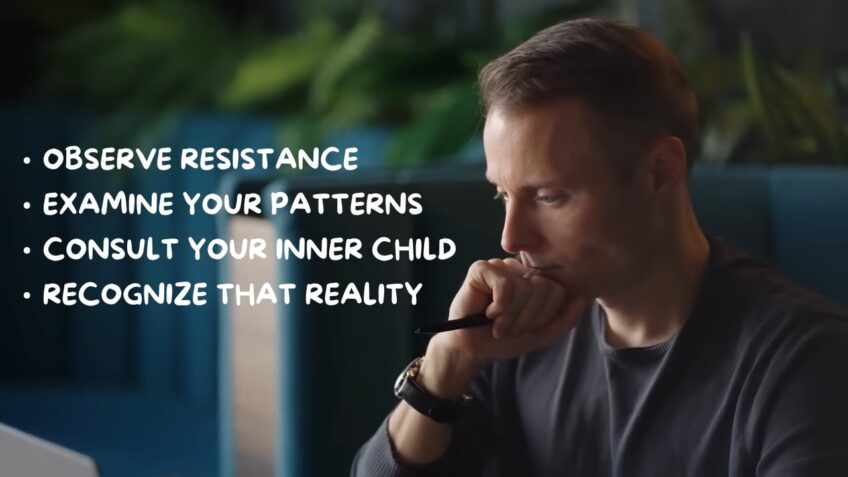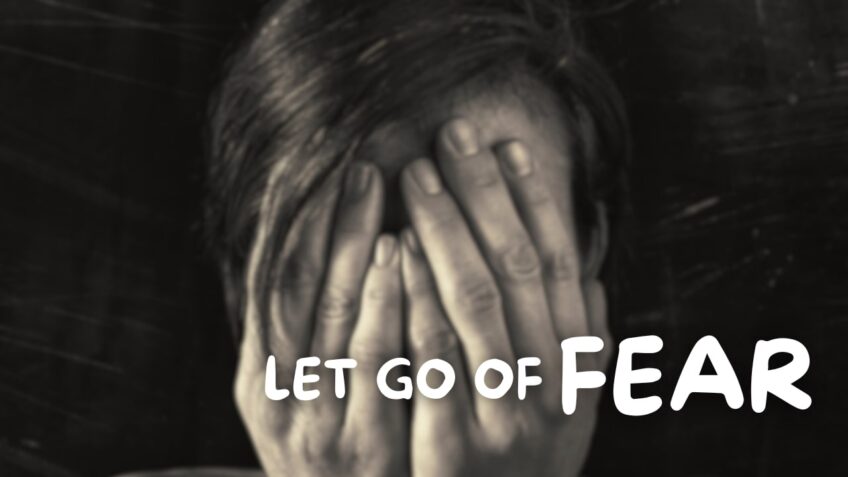What does it mean to let go?And how can we achieve it? In this discussion, we’ll focus on releasing the past to move forward from relationships, individuals, and unhealthy emotions.
As humans, we tend to fight for what’s important to us. We may yearn for the past, desire that a loved one hadn’t departed, or harbor resentment from instances when we were wronged. However, clinging to things and people that are no longer accessible is detrimental to our well-being. It traps us in the reminiscences of our past and hinders us from recognizing and valuing what we possess currently. That’s why we’re going to explore how to release various aspects that we often hold onto for too long the past, resentment, love, fear, and more.
Before delving deeper, we thought you might be interested in assessing your present state of well-being. Obtain your free personalized report by taking our well-being quiz. And for the well-being entrepreneurs, coaches, and consultants?
Page Contents
- 1 Definition Of Letting Go
- 2 Why is letting go so difficult?
- 3 Releasing the Past
- 4 Releasing Expectations of the Future
- 5 Letting Go of Loved One
- 6 Releasing Anger
- 7 Releasing Fear
- 8 Meditations for Releasing Attachment
- 9 Steps for Letting Go
- 10 More Tips
- 11 FAQ
- 11.1 How can I identify when it’s time to let go?
- 11.2 How can I let go of anger?
- 11.3 What are some strategies for letting go of fear?
- 11.4 How can I let go of past regrets?
- 11.5 Can letting go improve my mental health?
- 11.6 How can I let go of unhealthy relationships?
- 11.7 How long does it take to let go?
- 11.8 How can I let go of control?
- 11.9 What are some ways to cope with the emotional pain of letting go?
- 11.10 How can I build resilience and learn from the process of letting go?
- 12 Conclusion:
Definition Of Letting Go
In discussing the concept of letting go, we’re not referring to physically grasping something with our hands. In psychology, letting go is more about mentally releasing our attachment to something. Rather than struggling to keep someone in our lives or insisting on a specific outcome, we relinquish that need or craving and instead accept what is or what must transpire. This highlights the importance of acceptance—actively welcoming experiences, thoughts, and emotions as a vital component of what it means to let go.
Why is letting go so difficult?
As humans, we have a tendency to hold onto things, even those that we know are harmful to us. One possible explanation is that the more we understand ourselves, the more we appreciate our own identity. If we recognize ourselves as being in a relationship with a particular person, our self-perception might be disrupted if that relationship ends. Similarly, if we leave a job even one we despise what will our future occupation be? More significantly, who will we become when we no longer have that career?
Self-awareness plays a crucial role in our well-being, making it challenging to release something that is central to our self-image. The fear of not knowing who we’ll become or how we’ll feel can be intimidating. Consequently, we might find ourselves stuck, clinging to both positive and negative aspects of our lives, apprehensive about letting go.
Releasing the Past
One of the most challenging aspects to let go of is the past. We may be experiencing difficult times and yearn for the better moments we once had. This could involve wishing for a loved one’s return, missing a close friend we’ve lost touch with, or even longing for the presence of someone important who is no longer with us.
Allow me to share a personal example. My partner recently faced difficulties in letting go of who I once was. A few years ago, I fell seriously ill, and although I have mostly recovered, I’m unable to do everything I used to. I’m not as physically strong, which limits my participation in adventurous activities. I’m more cautious about my health, leading me to avoid excessive partying.
Consequently, I’m not exactly the same friend or partner I was before. His struggle to let go makes it harder for him to appreciate the person I am today, and it makes it more difficult for me to accept my current self. This instance demonstrates how failing to let go can create complications and lead to negative emotions in life.
Releasing Expectations of the Future
Another aspect that can be tough to let go of is the future or a specific notion of how the future should unfold. Have you ever felt like you’re banging your head against a wall, trying to make something happen, but it simply won’t? Perhaps you’re attempting to launch a business, salvage a failing relationship, or achieve a lifestyle beyond your means, yet you keep encountering obstacles.
It can be challenging to determine whether you’re facing difficulties and roadblocks that you can and should overcome hurdles that will develop your character and help you reach the goals you’ve set. Or, are these obstacles insurmountable? Are you squandering your time and energy on a path when you should instead let go, unwind, and accept the natural course of life? Reflecting on your current position and whether the future you’re striving for is genuinely suitable for you can be beneficial.
For instance, during my time in graduate school, I struggled to emulate other students publishing papers, presenting at conferences, and ticking off the requirements to become an academic. I made every effort, but success eluded me. At some point, I released the notion of becoming a college professor, and it brought me a sense of relief. Finally, I could simply be myself and discover where life would take me (and, for the record, I’m glad I let go).
Letting Go of Loved One

Arguably, the most difficult thing to let go of is someone you love. It could be a romantic relationship or a friendship, and both can be tough. Whether you’re letting go because the other person is no longer in your life, or because you’ve chosen to remove them from your life, moving on can be challenging. Here are some tips for letting go of someone you love:
1. Be optimistic When letting go, try to focus on the positive aspects of the future and maintain an optimistic outlook. If we expect to fail, we are more likely to do so.
2. Release blame Blaming someone involves making assumptions about their intentions behind their actions (Malle, Guglielmo, & Monroe, 2014). We might believe they deliberately harmed us with the intention of causing pain. However, we can never truly know another person’s intentions, and holding onto blame keeps us stuck, wishing the other person had behaved differently instead of learning how to adapt our own behavior to achieve our desired outcomes in the future.
3. Embrace self-compassion Regardless of who initiated the decision to let go, practicing self-compassion can be a valuable tool in healing wounds and moving forward effectively. Endeavor to be kind to yourself, forgive yourself for any mistakes, and accept your needs as they are.
Releasing Anger
When we hold onto anger, we struggle to let go of past events. It’s natural to feel angry if we’ve been wronged, mistreated, or exploited. However, clinging to anger can result in anger issues and prevent us from fully experiencing the present. Here are some tips to help you let go of anger:
1. Release rigid beliefs Anger often stems from an attitude of hostility, resentment, or distrust . Our perspectives and convictions about right and wrong can fuel anger when situations contradict our beliefs. By loosening our grip on these beliefs and accepting that other people’s experiences, opinions, and actions are also valid, we reduce the potential for anger.
2. Channel anger for progress Anger is a powerful negative emotion that can energize us. Suppressing it can harm our well-being, but if we use anger to restore justice, respect, and balanced relationships, it can help us gain a greater sense of control over our lives .
Releasing Fear
When we hold onto fear, we’re likely struggling to let go of potential future events. We might obsess over the worst possible outcomes or focus excessively on what could go wrong rather than what could go right. Excessive worrying drains our energy and prevents us from enjoying the present, as we spend time contemplating scenarios that might not even unfold as we imagine. Here are some tips to help you let go of fear:
3. Seek the silver linings When gripped by fear, we often only consider the negative outcomes without recognizing the positive ones. For example, when I was sick for a year, I was terrified that my condition would persist indefinitely. However, I reminded myself that the experience was helping me learn how to be genuinely healthy and well. Adopting this mindset helped me through a difficult period.
4. Cultivate gratitude Shifting our focus from potential negatives in the future to positives in the present can be beneficial. When we’re preoccupied with future concerns, we overlook the good things happening now. Make an effort to identify and appreciate the aspects of your life for which you’re grateful.
5. Embrace journaling Sometimes, we hold onto fear because we’re afraid of forgetting the things we believe we need to worry about. Daily journaling can be an effective solution.
Meditations for Releasing Attachment
Since letting go requires a mental shift from clinging to something to accepting its absence from our livesit inherently involves mental processes and working with our thoughts. One way to engage with our thoughts and cultivate acceptance is through mindfulness meditation.
Mindfulness involves observing thoughts and experiences nonjudgmentally, acceptingly, and without attachment. Research indicates that mindfulness meditation can help us release negative thoughts. By practicing the art of letting go of our thoughts and emotions, we can potentially improve our ability to let go and make it easier to do so in everyday life.
Steps for Letting Go
Now that you understand how to let go in various situations, let’s outline a plan for letting go. Here are the steps:
1. Consider whether you’re ready to let go. Ask yourself some questions to determine if you’re genuinely ready to let go. Is this person or experience draining more from you than it’s providing? Do you feel a pull away from this person or experience? Alternatively, do you feel the need to stay and continue working on improving this aspect of your life?
In our fast-paced, instant-gratification world, it’s easier than ever to give up on things prematurely. We might choose to let go rather than work on fixing something valuable. Take as much time as you need to think it through.
2. Examine what’s preventing you from letting go. If you’re reading this article, you’ve likely been contemplating letting go for some time. What has been holding you back? Are you uncertain, afraid, or unsure of the next steps? It’s okay to wait until the time feels right for you to let go.
For example, you might be entirely certain that you’re ready to leave a job, but you’re unsure about your next career move. It’s fine to figure out the next step before taking the first one. Do what feels right for you and do it at your own pace.
3. Develop your ‘letting go’ plan. If you’re prepared to let go, make the decision, commit to it, and create a plan outlining how you’ll achieve it. What actions will you take? When will you take them? How will you address anticipated challenges as you let go? The more precise your plan, the easier it will be to execute.
More Tips

More Tips for Letting Go Here are some additional strategies you might want to try to help you let go and develop the skill of letting go.
1. Observe resistance. Pay attention to any resistance you feel when letting go. What does it reveal about your identity and desires?
2. Examine your patterns. Do you often struggle to let go? Or, do you find it challenging to let go of specific things or people? Analyze these patterns and evaluate how they are benefiting or hindering you.
3. Consult your inner child. As we age, we tend to rely more on our rational mind and often disregard our emotions or intuition in decision-making. Pause when considering letting go and ask your inner child what they want. You might gain unexpected insights from their response.
4. Recognize that reality often differs from expectations. Television and movies frequently depict an unrealistic view of relationships and life in general. Consequently, many of us grow up with expectations that don’t match reality. When confronted with the truth, we may resist accepting it. If this resonates with you, try to let go of your preconceived notions and replace them with your current understanding of reality.
FAQ
How can I identify when it’s time to let go?
Signs that it’s time to let go include feeling stuck, experiencing more pain than joy, or realizing your needs are not being met. Reflect on your situation and assess if your well-being is suffering or if you’re unable to grow or move forward.
How can I let go of anger?
To let go of anger, try loosening up on rigid beliefs, practicing empathy, and using anger as motivation to restore justice and improve situations. Focus on understanding others’ perspectives and using your energy to create positive change.
What are some strategies for letting go of fear?

To let go of fear, look for silver linings in difficult situations, practice gratitude, and try journaling. Shift your focus to positive aspects of your life and future, and use writing to process and release your fears.
How can I let go of past regrets?
To let go of past regrets, acknowledge and accept your mistakes, practice self-forgiveness, and focus on personal growth. Learn from your experiences, and use them as opportunities to improve and make better choices in the future.
Can letting go improve my mental health?
Yes, letting go can improve mental health by reducing stress, anxiety, and negative emotions. It can also promote personal growth, resilience, and a healthier mindset focused on the present and future.
How can I let go of unhealthy relationships?
To let go of unhealthy relationships, recognize the signs of toxicity, establish boundaries, prioritize self-care, and seek support from friends, family, or a therapist. Focus on your well-being and invest in relationships that nourish and uplift you.
How long does it take to let go?
The time it takes to let go varies for each individual and situation. Factors include personal resilience, the intensity of the attachment, and the level of support available. Be patient with yourself and remember that healing and growth take time.
How can I let go of control?
To let go of control, practice acceptance, mindfulness, and flexibility. Recognize that you cannot control everything and focus on what you can control, such as your reactions, choices, and personal growth.
What are some ways to cope with the emotional pain of letting go?
Coping strategies for the emotional pain of letting go include talking to supportive people, engaging in hobbies and activities that bring joy, exercising, practicing self-compassion, and seeking professional help if needed.
How can I build resilience and learn from the process of letting go?
Building resilience involves developing healthy coping strategies, maintaining a support network, practicing gratitude, and focusing on personal growth. Learn from the process of letting go by reflecting on your experiences, identifying patterns, and using these insights to make better choices in the future.
Conclusion:
Letting go is an essential skill for personal growth, well-being, and healthy relationships. It involves releasing attachments, embracing change, and accepting what is or what needs to happen. Developing the ability to let go takes time, practice, and self-compassion. By utilizing the tips, strategies, and steps outlined in this guide, you can cultivate the skill of letting go and move forward in life with greater ease and resilience.
Theodore is a prolific author at Fischer Institute, known for his insightful articles on health and nutrition. His expertise spans a wide range of topics, from the benefits of traditional foods to the latest in health trends, always aiming to educate and empower readers towards better wellbeing.















